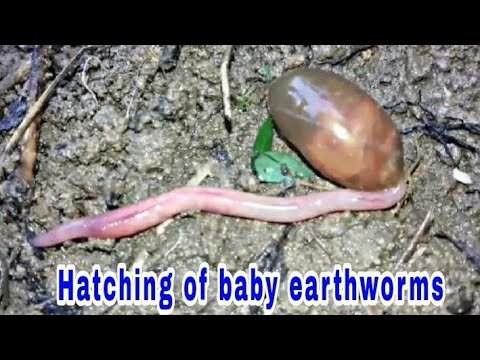
You might be wondering why earthworms matter so much. Well, they play a huge role in creating healthy soil, which is essential for growing plants. Without them, our gardens and crops wouldn’t thrive quite as well. So, let’s dig a little deeper into how these little creatures reproduce, from their cocoon stage all the way to becoming hatchlings.
The Basics of Earthworm Reproduction
Earthworms are **hermaphrodites**, which means each worm has both male and female reproductive organs. This interesting trait allows them to pair up with another earthworm, even if it’s just the two of them in a patch of soil. When they come together, they exchange sperm, ensuring that both can produce eggs.
Now, you might be wondering why this is important. Having both reproductive systems increases their chances of finding a mate, which can be quite handy when they’re living in environments where they might not encounter many others of their kind. This adaptability is one reason why earthworms thrive in various habitats, from forests to gardens.
The Mating Process
When two earthworms are ready to mate, they align their bodies in a sort of embrace. This position allows them to exchange sperm. After they’ve completed this exchange, each worm can produce their own eggs. But don’t expect a dramatic display—the whole process is pretty subtle. The worms might wiggle around a bit, but mostly, it’s just a couple of squirmy bodies working together.
Once the sperm is exchanged, the earthworms will start to produce cocoons. These are special structures made of mucus, which help protect the developing eggs inside. The cocoon is a crucial step in the reproductive process, acting like a safety net for the future hatchlings.
Cocoon Formation
After the mating ritual, earthworms create their cocoons in a fascinating way. They secrete mucus, which hardens in the shape of a small capsule. This cocoon can hold multiple eggs, depending on the size of the worm and the conditions outside.
Imagine these would-be hatchlings being snuggled up, safe from predators and environmental hazards. The cocoon’s design is perfect for keeping them protected until they’re ready to break free. Earthworm cocoons can be found in moist soil, often looking like small, jelly-like beads that blend into their surroundings.
Development Inside the Cocoon
Inside each cocoon, the eggs go through several stages of development. Initially, they look like tiny balls, but as days go by, they start to grow. Earthworms have a relatively quick development period. Depending on the species and environmental conditions, the eggs can take anywhere from 2 to 8 weeks to hatch.
During this time, the developing worms absorb nutrients from the yolk provided in the cocoon. They’re like little nuggets, getting everything they need to grow strong. It’s truly a waiting game, both for the parent worms and the little ones inside.
Hatchlings Emerging from the Cocoon
When the time is right, tiny hatchlings break free from their cocoons. They’re usually about the size of a fingernail and are entirely dependent on their surroundings. It’s a big leap from a cozy cocoon to the vast world of soil. Their first challenge? Learning to navigate their new home while avoiding predators and finding food.
This can be a tough transition, but it’s also an exciting journey. Over time, these little worms will grow and mature, eventually repeating the cycle of life. It’s kind of poetic when you think about it—each generation continuing the story.
The Importance of Earthworm Reproduction
So, why should we care about how earthworms reproduce? For starters, healthy soil is vital for agriculture and gardening. Earthworms aerate the soil, improve its structure, and help with nutrient cycling. If there weren’t enough earthworms reproducing and populating the ground, our gardens would struggle to thrive.
Plus, understanding the life cycle of earthworms can inspire conservation efforts. By protecting their habitats, we ensure that these worms can continue their essential work and contribute to a healthy ecosystem.
Encouraging Earthworm Habitats
If you love gardening or are simply interested in nurturing nature, you can create a welcoming environment for earthworms. Here are some tips:
- Moisture: Keep your soil moist but not soggy. Earthworms thrive in damp conditions.
- Organic Matter: Add organic compost or mulch to provide food and improve soil quality.
- Avoid Chemicals: Steering clear of pesticides and fertilizers will help maintain a healthy habitat for worms.
By making these small changes, you can encourage earthworms to thrive in your garden, supporting their reproduction and the overall health of your soil.
In conclusion, the journey of earthworm reproduction—from mating to cocoons to hatchlings—is a captivating cycle that’s essential for our ecosystems. These tiny creatures are much more than they appear: they’re the unsung heroes beneath our feet, working hard to keep our planet healthy. Next time you spot an earthworm, take a moment to appreciate the remarkable life processes that happen just below the surface!
